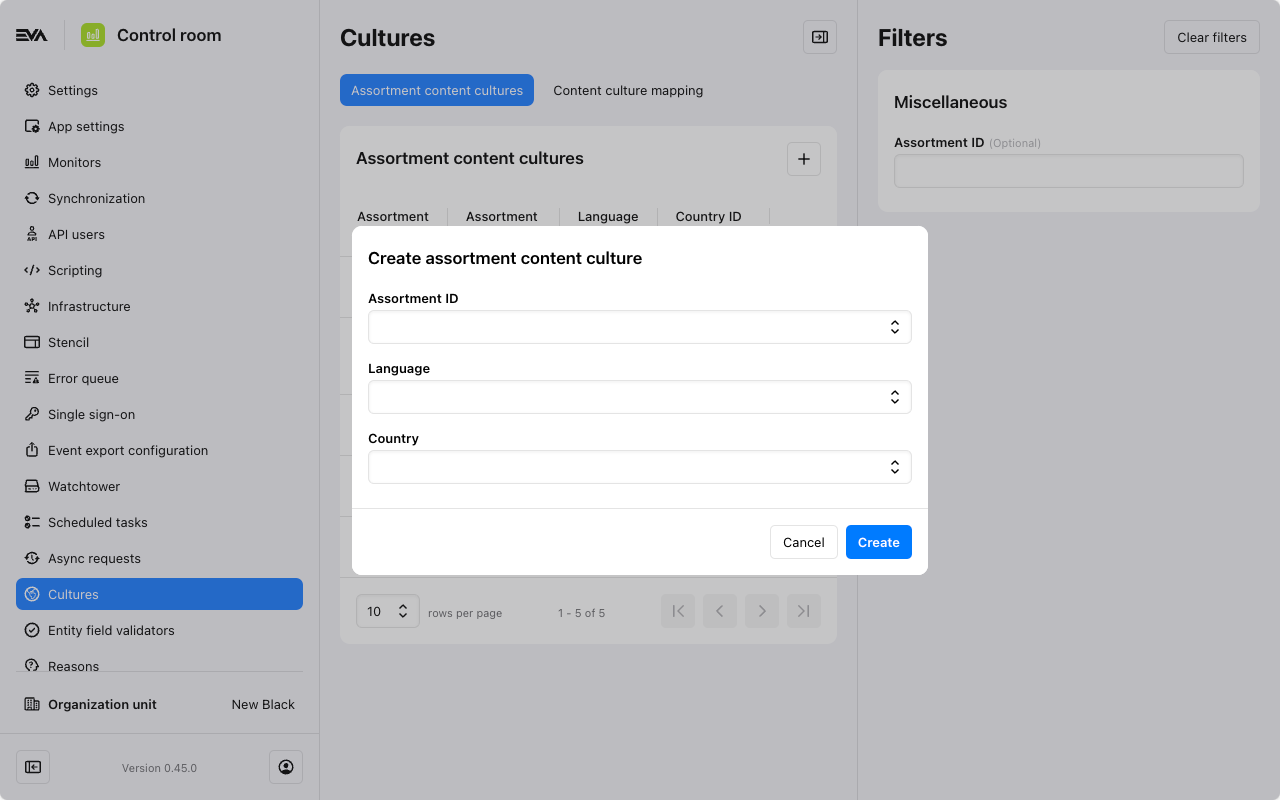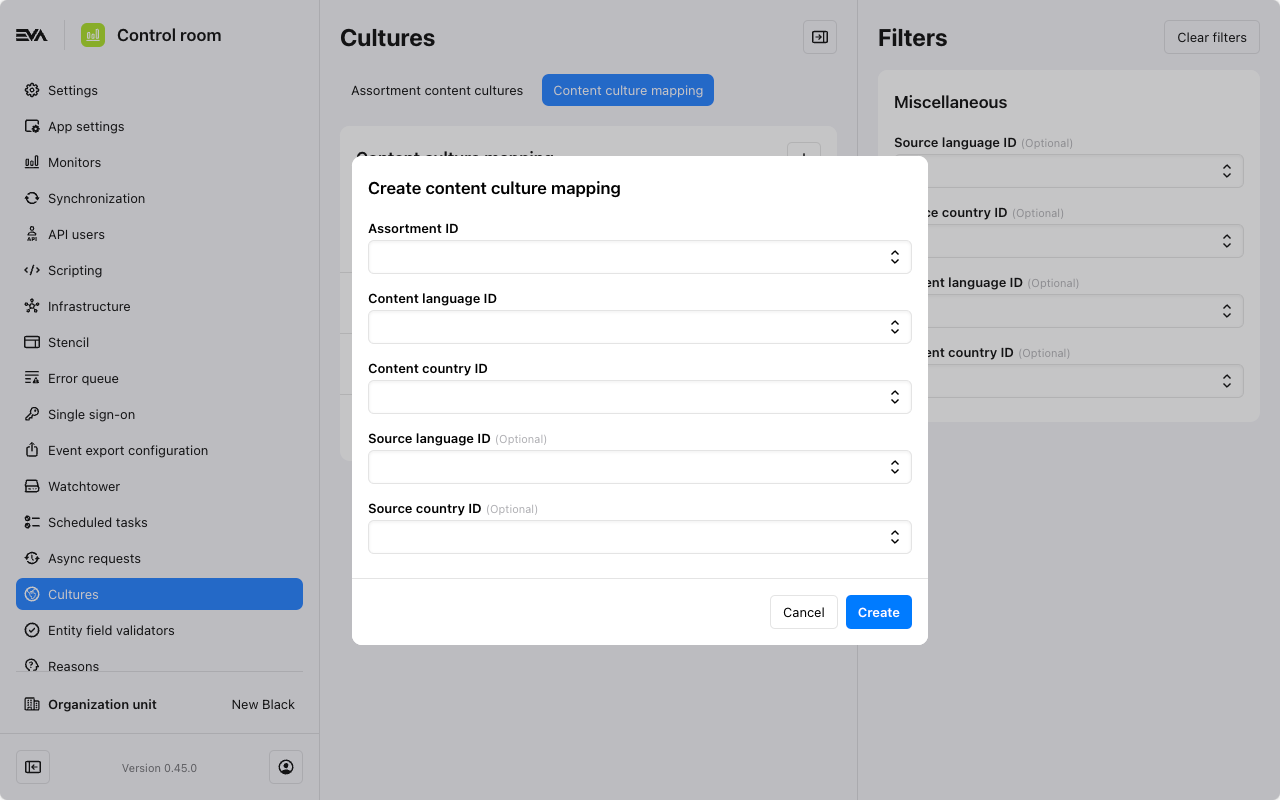Cultures
Cultures
Adapting to the languages and regionsThe culture determines the available localized content. In this context, localization refers to adapting content to meet the linguistic and regional preferences of a specific target audience or market.
You can easily create new or delete existing assortment content cultures or content culture mappings in the Cultures chapter in the Control Room module.
If you go to a specific Organization Unit (OU) via Organizations, you can check the Basic Information card for the country, region, and language used in that OU. This information can be edited using the 'edit' icon. Selecting a country is required.
Content Cultures
Content cultures can influence the way your products are displayed in your web stores, depending on the customer's selected language.
Assortment Content Cultures
This is essential to be able to show products in a different language. Even if your products have already been imported with different translations, they will not be shown unless this step is performed.
At first glance, you see an overview of all the assortment content cultures. You can filter through them by looking up the Assortment ID.
While they cannot be edited, you can delete them by clicking on the 'trash can' button.

When creating a new assortment content culture, the Assortment ID, Language and Country are required.

In order to add new content culture for a new assortment, the assortment must first be created.
Content Culture Mapping
This can be used to map defaults other than the "default" default. You can map which culture to use when the language chosen by your customer does not have a corresponding culture. For example, a French customer might prefer English instead of Dutch when there is no French culture specified for your products.
There is an overview of all the content culture mappings. Like assortment content cultures, they cannot be edited, but you can delete them by clicking on the 'trash can' button.

When creating a new content culture mapping, the Assortment ID, Content Language ID and Country ID are mandatory.
- SourceLanguageID is the language which the customer requests.
- SourceCountryID is the country associated with the request.
- ContentLanguageID is the language which will be displayed if the requested language is not available.
- ContentCountryID is the country the language here above is tied to.
